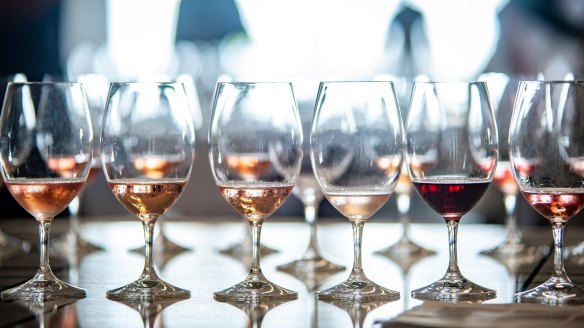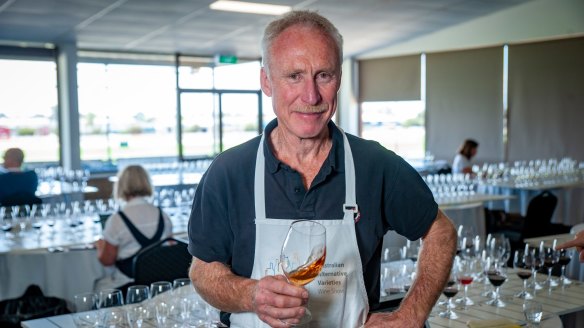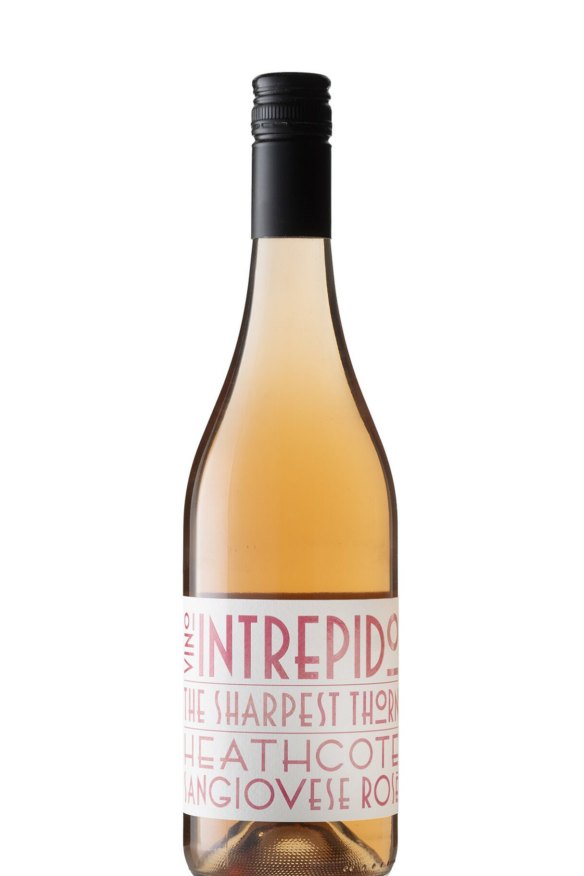The rise of (really interesting) rosé – and three to try this summer

The world of rosé has changed, as anyone partial to Portugal's Mateus Rosé during the late 1980s can attest. The teardrop-shaped bottle and sweet, deep-pink liquid was a worldwide hit. You couldn't miss it. It was bright, like a stoplight.
Gone are the electric pink, super sweet stereotypes (although Mateus Rosé is still available at bottle shops for about $10 a bottle).
These days, a shift toward dry, savoury styles and the use of alternative varieties add a layer of complexity to the offering. This is largely thanks to Provence rosé making its way from the south of France to Australian shelves. Visit your local wine merchant. Chances are, the rosé section is a kaleidoscope of pale pink, salmon and rose-gold hues.

Local producers and consumers have embraced the shift to more savoury, dry styles. North-east Victoria based vigneron Mark Walpole is one of them. Walpole has seen it all in more than 30 years as a viticulturist.
"When I first started in the industry at Brown Brothers in 1987, they were literally just getting rid of rosé," he says. "It was at the end of its cycle. There was none at all for a while, other than the slightly sweet Mateus Rosé. Gradually, they started coming back again."
Walpole noticed rosé's second coming a decade ago. "This time around, there's no doubt there's far more diversity. That's partially because there are far more Italian varieties available now. Sangiovese, nebbiolo, aglianico … you name it.
Where else in the world could someone judge 115 grape varieties in one place?Fighting Gully Road winemaker Mark Walpole
"De Bortoli's nebbiolo-based rosé has been extremely successful. Its savoury style and beautiful acidity and crispness seems to fit the current bill perfectly."
In the early days, Australian rosé was typically made from pinot noir, shiraz or cabernet.
"It was generally a byproduct," Walpole says. "But that has changed. Grapes are now being grown and picked specifically for rosé. I think that's probably the case for many producers now. They're being made with intent and that's why they're better."

Grenache was once a popular choice but the rising price of grenache grapes per tonne makes it a less viable option. Demand means some producers simply can't get their hands on the variety. It is a chance for alternatives to rise to the challenge.
Walpole is a big believer in sustainable, alternative varieties and champions them at his vineyard at Whorouly in the Alpine Valleys. He also has his own wine brand, Fighting Gully Road, under which he releases rosé made with mourvèdre (mataro) and sangiovese.
Climate appropriate alternative varieties are on the rise. Walpole was a judge in the 2021 Australian Alternative Varieties Wine Show, which took place in Mildura this week. The rosé class had 38 entries (it peaked in 2017 at 57 entries).
"Where else in the world could someone judge 115 grape varieties in one place?" he says. "What other country in the world has the ability to do that, other than during an international wine show? All of these grapes have been grown in Australia. That's pretty amazing."
It's all good news for consumers.
"Italian varieties suit rosé so well because they're savoury and have so much natural acidity," Walpole says. "That's the key. That beautiful tension from the acidity. The colour is perfect too. Sangiovese gives you that beautiful salmon colour. There's no hint of brown. It just fits like a glove."
Winemaker, fine-wine retail guru, podcaster and 2021 Young Gun of Wine finalist James Scarcebrook swears by sangiovese. His Vino Intrepido wine brand boasts many Victorian-grown Italian varieties.
"I've only ever used sangiovese and have a love affair with Heathcote sangiovese. It has a bit more texture on the palate and retains its varietal character. The market for quality sangiovese from Heathcote has really exploded. I got some last minute in 2021."
Other options include dolcetto with which DiGiorgio Family Wines took out the Limestone Coast Wine Show's Best Sweet Wine category with their 2021 Dolcetto Rosé, while Wangolina winemaker Anita Goode makes an off-dry style using a mix of dolcetto and tempranillo.
"Nebbiolo rosé has surprised me," Scarcebrook says. "I was of the opinion that using nebbiolo was a waste when you can make such great red wine with it but it retains natural acidity and makes a really good rosé. Negroamaro is also a good one for rosé."
In Scarcebrook's experience, very few (if any) customers are buying rosé based on a variety or region.
"A lot of varieties, alternative or otherwise, make boring rosé in that they have no sense of what they're made from or why."
Whether this changes remains to be seen. Walpole has high hopes.
"It's going to be really interesting to see where it goes," he says. "Some of the Bandol Rosé or Provencal rosés from France are being sold in Australia at $50-to-$60 a bottle. They're serious wines. No one in Australia has really attempted to take it to the next level but I think we've got the resources and the skills to take that next step. Watch this space."
Three new-wave Australian rosés to try
Oliver's Taranga 2021 Chica Mencia Rosé, McLaren Vale, $27
Winemaker Corrina Wright is part of a troupe of McLaren Vale winemakers championing Spanish variety mencia and she proves just how stellar it can be in rosé form. This creation is dry and savoury, and hits with florals and a tidal wave of watermelon (specifically the pink bit right near the peel). Summer in a bottle. oliverstaranga.com
Vino Intrepido 2021 The Sharpest Thorn Sangiovese Rosé, Colbinabbin, $28
James Scarcebrook named his wine after the phrase, "The most beautiful rose can have the sharpest thorn." He did so due to its "cuddly red fruit" and razor sharp, slightly herbaceous palate. The disarming bronze hue brings all the boys and girls to the yard. vinointrepido.com
Sigurd 2021 Rosé, Barossa Valley, $29
Exciting young winemaker Dan Graham made his dry, textural, utterly thrilling rosé using a motley crew of grape varieties. Grenache, carignan, viognier, mourvedre, syrah, malbec, sauvignon blanc and pinot gris get up close and personal here and the result is spicy in all the right ways. sigurdwines.com
